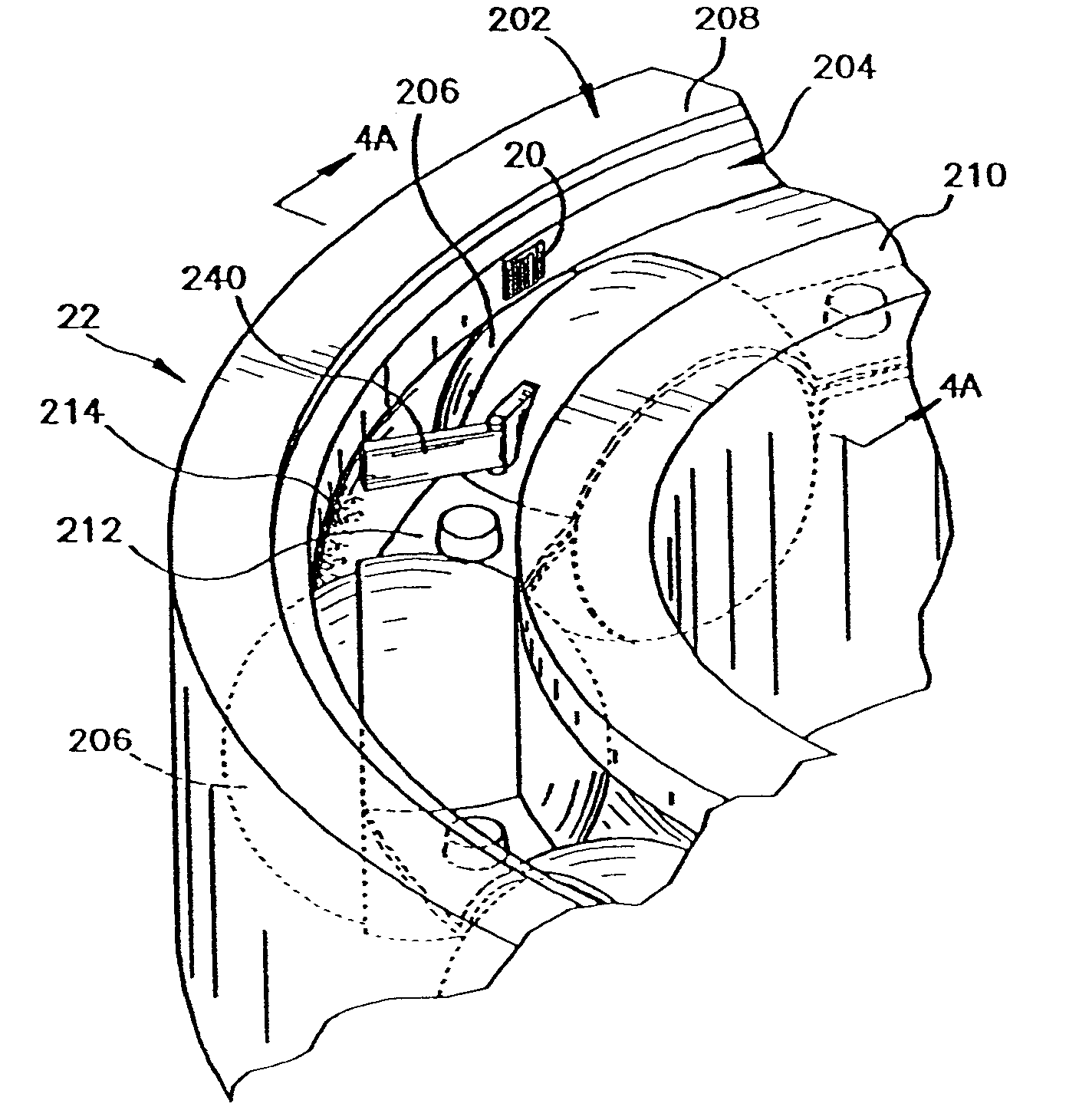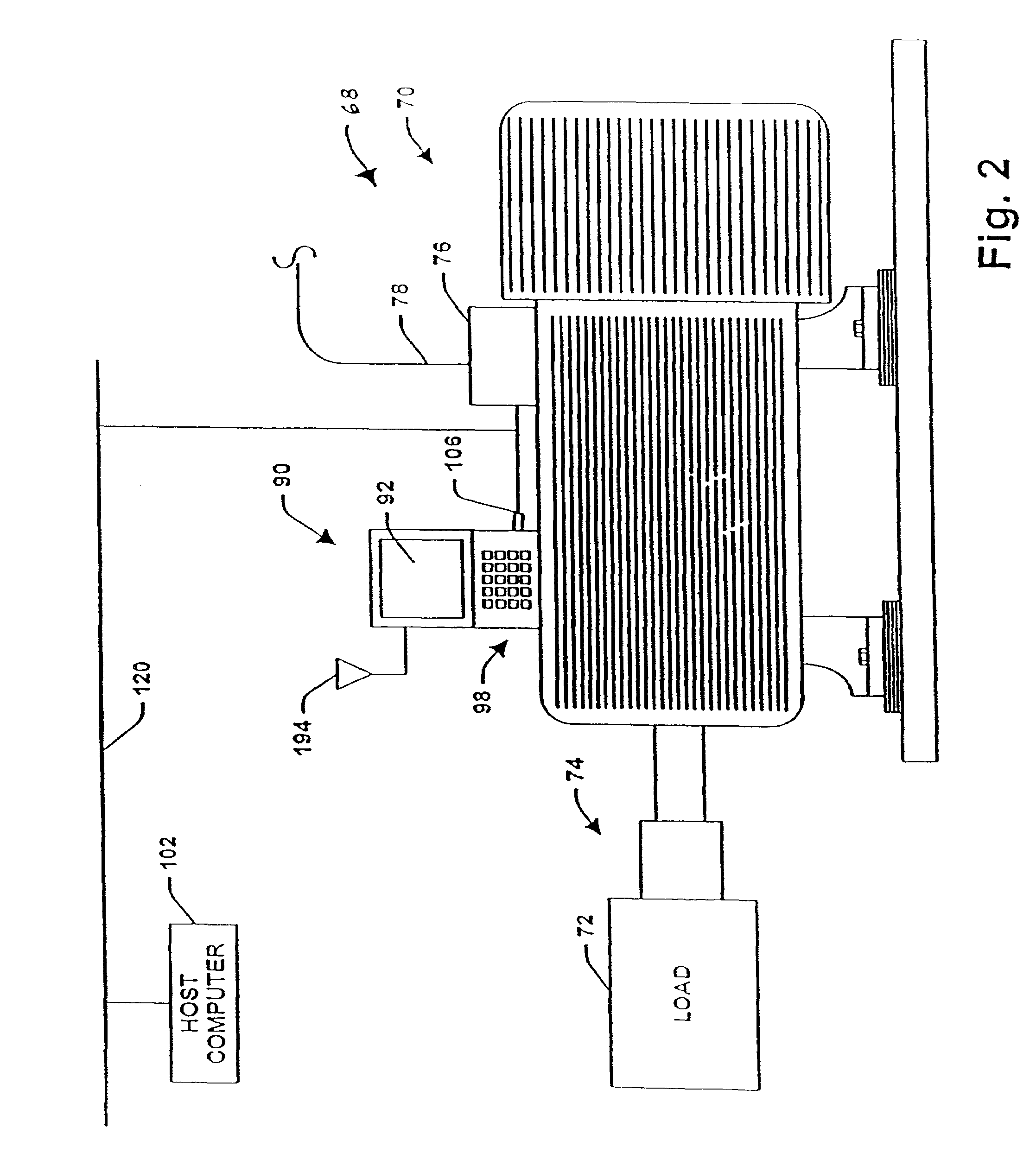System and method for dynamic lubrication adjustment for a lubrication analysis system
- Summary
- Abstract
- Description
- Claims
- Application Information
AI Technical Summary
Benefits of technology
Problems solved by technology
Method used
Image
Examples
Example
DETAILED DESCRIPTION OF THE DRAWINGS
[0031]Referring now to the drawings in detail, and initially to FIG. 1, an exemplary lubrication-sensing device 20 is shown in perspective view. According to the present invention, the lubrication-sensing device 20 is integrated into a bearing 22 (FIGS. 4a, 4b and 5-13). This bearing-sensor integration allows in situ lubrication readings to be obtained at a substantially high data sampling rate whereby accurate up-to-date, real-time, continuous data analysis of lubrication health may be provided. In this manner, lubrication maintenance can be scheduled to correspond with the state of the lubrication and / or the processed data can be compiled for trend analysis and forecasting. Lubrication maintenance may be reliably scheduled based on the projected future state of the bearing lubricant. Performing maintenance based on projected future state of the lubricant enables industries to implement effective condition based maintenance programs.
[0032]Althoug...
PUM
 Login to View More
Login to View More Abstract
Description
Claims
Application Information
 Login to View More
Login to View More - R&D
- Intellectual Property
- Life Sciences
- Materials
- Tech Scout
- Unparalleled Data Quality
- Higher Quality Content
- 60% Fewer Hallucinations
Browse by: Latest US Patents, China's latest patents, Technical Efficacy Thesaurus, Application Domain, Technology Topic, Popular Technical Reports.
© 2025 PatSnap. All rights reserved.Legal|Privacy policy|Modern Slavery Act Transparency Statement|Sitemap|About US| Contact US: help@patsnap.com



